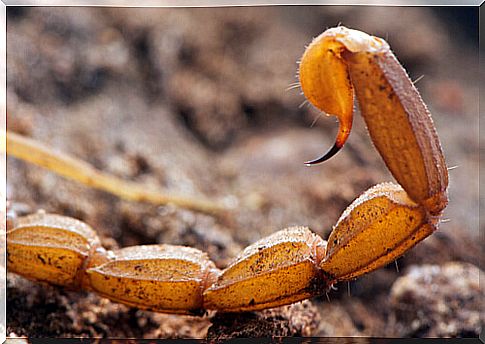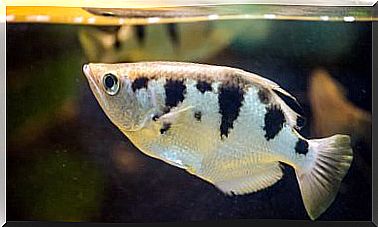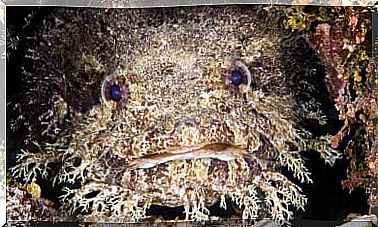Grasshopper Mouse: A Rodent Immune To Poison

The natural world never ceases to amaze us. Predator-prey relationships are basically an arms race for survival. In this dynamic, truly surprising evolutionary strategies are developed. An example of this is the grasshopper mouse and its immunity to venom.
Do you know anything about this cute rodent? How is it possible for an animal to be completely immune to the toxins of certain arthropods? Here we give you the answer to these questions.
About grasshopper mice
These small rodents are a group of vertebrates belonging to the genus Onychomys. This genus only has three species, most of which are distributed throughout the United States (Texas, Arizona and Nevada among other locations) and Mexico. These are Onychomys arenicola, Onychomys leucogaster, and Onychomys torridus.
Despite its kinship with the Mus musculus mouse , this genus of small mammals has several striking characteristics such as these:
- Its body is nine to 12 centimeters long. The tail, in general, does not reach seven centimeters.
- They are brown or grayish in color, with a white belly similar to that of many hamsters .
- What varies the most from other rodents is in their behavior : these mice are natural predators that stalk their prey in a similar way to cats. They are known for their unusual aggressiveness.
- They feed on grasshoppers, scorpions, centipedes, spiders, small snakes, and even other rodents.
- As a striking feature, grasshopper mice defend their territories with characteristic howls.
Quite different from a house mouse, right? Even so, its most fascinating feature is undoubtedly its immunity to the venom of predatory scorpions. This bizarre evolutionary adaptation has been of interest to researchers for many years.

Why is this rodent immune?
The grasshopper mouse is immune to the venom of the scorpion Centruroides sculpturatus. A study published in the journal Science in 2013 tries to answer this strange evolutionary adaptation:
The venom of these scorpions contains neurotoxins, which act on the central nervous and circulatory system of the animal that they sting with their stinger, causing a disruption in their sensory capacity.
The case of this rodent and the scorpion is a clear example of coevolution. The more toxic the venom inoculated by the invertebrate, the more sophisticated the mouse’s escape mechanism. But how does he do it?
Question of biochemistry
In this case, the mouse’s immunity comes from a mutation in the cellular mechanisms that transmit pain. To keep things simple, we will limit ourselves to saying that this rodent has a special amino acid, which prevents the action potential of the venom and neutralizes all the pain receptor neurons around it.
In the natural world, nothing is left to chance: almost no animal has developed this type of strategy to deal with poisonous animals, as it can be very expensive energetically.
In addition, in most environments, there are non-poisonous prey to capture rather than risk your life against an arthropod with toxic potential. This is not the case in the grasshopper mouse, since living in deserts and arid areas, scorpions may be the only food resource available at certain times.

Aggression and temperament
In addition to their violent behavior with prey, which they kill with repeated bites in their vulnerable areas, these mice also show aggression towards their companions.
In the few experiments in which they have been kept in captivity with other mice, these deadly rodents ended up killing them and consuming their corpse.
Why so much hostility?
This animal is in stark contrast to its other relatives, as European voles such as Apodemus sylvaticus are characterized by their elusive and peaceful temperament. The answer to this difference can be found in the variety of diet and the scarcity of resources.
Many rodents are omnivores or strictly herbivores, so they have (almost) unlimited food availability if they spend enough time searching, since there are almost always vegetables and seeds in the Mediterranean ecosystem.
This is very different in the case of grasshopper mice, since living in arid environments and being strictly carnivorous, the number of prey can be very limited. This would translate into an evolutionary strategy based on extreme aggressiveness: “do not allow the prey to escape, as it may be the only food you receive all day . “









